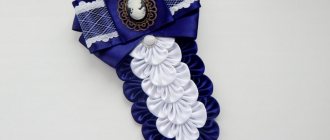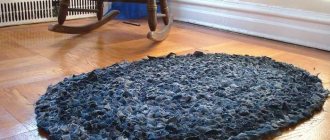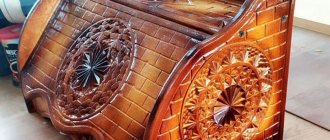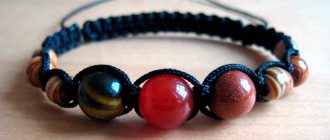A powerful ultraviolet flashlight is a device that can be used for various purposes. Ultraviolet flashlights are often used in their work by specialists in various industries. It can be used as a home germicidal lamp. Making from improvised materials will eliminate the need to buy professional equipment. You can learn how to make an ultraviolet lamp or ultraviolet flashlight with your own hands from the step-by-step instructions below.
UV connection diagrams
First, let's look at circuits that require connecting wires into an electrical circuit. To build them you will also need a base or stand:
Making a stationary lamp with a UV lamp is not difficult. To install the simplest device, you will need a fluorescent lamp of the DRL-250 type. It will make an excellent source of ultraviolet light. In addition you will need:
- igniting choke;
- standard socket socket;
- power wires.
You can use waterproof plywood or heat-resistant plastic as a base or stand. The throttle is fixed to the panel, after which the cartridge is installed on it. In this case, the cathode output is connected to connector “3”, and the anode output to connector “1” of the inductor. The power wire must also be connected to the inductor.
The design of the DRL lamp involves two shells. For the UV lamp project, the outer shell must be removed. In this case, you need to work very carefully so as not to damage the inner shell.
ATTENTION!
An ordinary bench vise and a wet rag will help you carefully remove the top layer of the lamp. DRL-250 is wrapped in a dampened cloth and clamped in a vice. This allows you to get rid of the outer layer of the lamp without being injured by fragments.
The cleaned workpiece is thoroughly treated with alcohol or solvent. After the lamp has dried, a protective aluminum mesh is put on it. It can be extracted from the designs of old lighting fixtures. The finished product can be attached to a tripod. In this case, the lamp will become portable.
The second UV lamp assembly diagram will be useful for women. It solves the problem of constant visits to a manicurist to apply gel polish on your nails. Essentially, this is a special drying chamber in which the varnish quickly hardens under the influence of ultraviolet radiation. To assemble the device you will need:
- external electrical distribution box for 10 terminals (190x150x77 mm);
- substrate for LEDs 3 pcs. (12x3W Led PCB module);
- thermal paste;
- aluminum profiles about 60 cm (25x8 mm);
- driver 9x3W – 1 pc.;
- UV diodes with constant forward current (IF) 700 mA – 9 pcs.
- power cord – approximately 1 m;
- power button – 1 pc.;
- timer - 1 pc.
Let's consider the algorithm for assembling a drying chamber using UV diodes:
- Unscrew the junction box into two parts. We remove the lid to the side.
- In the part of the box with terminals for the wires, we cut one large hole through 3 channels. Clean the resulting hole with sandpaper.
- Take the lid of the box. We screw three strips of aluminum profile to its inner side (the length of the profile corresponds to the width of the lid), so that two profiles are at the edges and one in the middle. The profile must be installed according to the width of the box.
- Let's move on to electrical installation. We connect the power button, driver and timer to the power cord in sequential order. We solder the wires to the last element, which will be used to provide power to the UV lamps.
- We solder three diodes per substrate. The substrates are connected in series to each other.
- We connect 3 diode substrates with leads from the timer.
- We screw the substrates in the center of the aluminum profiles, so that the lamps look inside the box.
- We twist the box.
- We connect the finished drying chamber to the network.
This scheme is more complicated than all the others. It will require minimal knowledge of electrical engineering, as well as soldering skills.
Main characteristics
An IR illuminator is a special device that operates exclusively in the infrared spectrum due to the presence of 1 or more lamps. This advantage makes all dark objects visible to the outdoor CCTV camera. Backlighting is a very important component, since outdoor video cameras can normally record images only if there are effective light rays that bounce off various objects, thereby making the picture clearer. Without the necessary lighting, objects in the picture will be blurry and gray.
The IR illuminator consists of the following parts:
- A panel that has light-emitting diodes in its structure. This element is necessary to ensure normal operation of the device even with minimal or no lighting.
- Light filter. A special filter is needed to unmask the device. The function of the filter is to completely absorb the visible component of infrared radiation.
- Sealed housing. Typically, outdoor surveillance cameras are installed outdoors; the entire electronic circuit requires protection from adverse weather. To do this, the device is placed in a sealed housing.
- Power driver. This device is necessary so that the camera can be connected to a 220 V network, since the light-emitting diode itself is powered by a small amount of energy.
https://youtube.com/watch?v=Y_cC7jmoUdo
How to make it yourself from your phone?
This option is suitable for phones with a built-in LED flash. So, to assemble a simple UV lamp from a phone you will need:
- phone with LED flash;
- transparent tape;
- purple and blue marker or felt-tip pen;
- stationery knife.
Now let's look at a step-by-step diagram of assembling such a lamp:
- A small strip of tape is placed on the flash to cover the LED flash. It is important that no air bubbles or folds form under the adhesive tape.
- The first layer of tape is painted with a blue marker. It is better to make a stroke once so that the color completely covers the tape.
- Another layer of tape is applied to the painted strip and painted purple.
- Apply a third layer of tape, which is painted blue.
- A final layer of tape is applied and painted purple.
- Turn on the flash and watch the effect of the resulting UV lamp.
This simple life hack has created a lot of buzz online. And it gave rise to a whole discussion. Some commentators noted that this method is not capable of replacing a real ultraviolet flashlight. Others were not too lazy to follow the instructions and stated with full confidence that the flashlight successfully coped with basic tasks, such as finding the source of an unpleasant odor in a house with animals or hidden messages during a quest. Check it out too, it will take a minimum of time.
For the “UV flashlight simulator” you will need: • Flashlight; • A pair of elastic bands; • Dark blue marker; • Purple marker; • A piece of oilcloth or cling film; • Scissors.
Step 1. Cut a small rectangle from the film (size relative to the flashlight - like the piece of paper in the photo). Secure it in front of the lantern glass with a rubber band and color it in with a blue marker. You need to paint it completely, without bald spots.
Step 2: Repeat Step 1 exactly. You should now have two blue layers of film in front of the glass.
Step 3. Do the same operation with another layer of film and elastic. But now color it over not with blue, but with a purple marker.
Ready! Time to check out the spy features. For example, on banknotes or inscriptions with a bright yellow marker.
You can also do a similar trick with your phone flash. This way the spy gadget will always be at hand.
You will need: • Scotch tape; • Scissors; • Blue marker; • Purple marker.
Step 1: Cut a small piece of clear tape and place it over the flash diode. Color the tape with a blue marker.
Step 2: Place a second piece of tape on top and also color it in with a blue marker.
Step 3: Place the third piece of tape and color it in with a purple marker.
Detailed video instructions on how to turn a smartphone into a UV detector can be found here. Now you can feel like a detective, solve all the domestic “crimes” and rest on your laurels.
Did you like the article? Then support us, click
:
Source: novate.ru
3 watt flashlight in a syringe bulb
Seeing what you can use to make a flashlight with your own hands, you may be surprised; the cost of a homemade gadget will not exceed one dollar, but the efficiency will meet all expectations. Self-assembly implies quality and, accordingly, a long service life.
The principle of operation is to connect to the battery through a 3 ohm resistance. The electronic unit charges the battery and the micromodule controls the process.
What parts do we need:
- Syringe flask;
- Lenses;
- Light-emitting diode;
- Power button;
- Register;
- Charging unit;
- Aluminum plate;
- Copper wires;
- Battery;
- Glue and liquid nails.
Auxiliary tools:
- Soldering iron;
- Drill;
- Thermal gun;
- Lighter.
Ultraviolet lamp for home use: device and manufacture
If there is a sick person in the house, it is very uncomfortable. It’s even more unpleasant when the disease is viral, and you have to take some precautions when communicating, trying not to get infected. But, as it turned out, it is possible to find a way out of this situation that will suit everyone.
When visiting clinics or hospitals, many were faced with the fact that entry into the premises was prohibited due to quartzing. Many have seen the lamp itself for this process. But few people know what this so-called “quartz” is and why a person should not be under its rays. So why not understand this term.
The real name of such a lamp is ultraviolet, and the name “quartz” comes from the fact that the bulbs of such devices are made of quartz glass. But first things first. First you need to understand what types of UV devices there are.
Operating principle of IR illuminators
The mechanics of operation and the idea of using an IR lamp for video surveillance are quite simple. At night, with low levels of natural light, the camera cannot form images because the sensor elements simply do not change their characteristics.
The option of organizing a constant background of the visible spectrum is quite expensive. It will require the use of powerful spotlights, will entail the cost of purchasing equipment, and will include the cost of constant maintenance in the form of replacing burnt out lamps or LED cells.
Don't forget about the cost of paying for electricity.
Infrared illumination for video surveillance uses the properties of the camera's light-sensitive sensor. This element is capable of recording not only waves of the visible part of the spectrum, but also capturing the IR range.
As a result, you can get a fairly clear and contrasting picture of the illuminated area. But there are several features that characterize IR illumination for a video surveillance camera.
- The LED power is not sufficient to expand the observation area.
- Installing a more powerful backlight may entail the need to equip the camera with expensive power supplies, strengthening power transmission lines, which will entail an increase in the cost of the technical solution.
Due to the difficulties listed above, the average camera, which is equipped with IR LEDs for video surveillance, can form an image of objects located 10-20 meters away, as well as provide an overview of a limited area.
The situation looks different with the use of external illumination sources. The infrared illuminator consists of a large number of LEDs that optimally use the power of the power source.
Such a device is capable of illuminating a large area without significant waste of energy. At the same time, a do-it-yourself infrared floodlight for video surveillance can be built on two basic mechanics:
- with constant voltage supply to the LEDs. This solution is characterized by energy consumption, which increases linearly depending on the number of installed emitters. In addition, the service life of semiconductor elements is limited; it is necessary to organize heat removal;
- Switching power circuits are much more practical. They are somewhat more complex in hardware implementation, but are easy to configure. By installing IR LEDs for video surveillance with your own hands and adjusting the circuit until you get a high-quality picture from the camera, you can easily achieve reduced energy consumption and low heat generation. The lifespan of semiconductor elements also increases significantly.
At the same time, the general mechanics of using a homemade device are similar to those of infrared illumination for CCTV cameras. A free-standing spotlight provides uniform illumination of a large monitoring area, guarantees the identification of objects at a considerable distance, and offers optimization of energy consumption and the cost of the system as a whole.
How to make IR illumination for video surveillance with your own hands
The simplest diagram for constructing IR illumination for a video surveillance camera with your own hands looks like a linear structure where the following are connected in parallel:
- series-connected diodes, the number of which is selected in accordance with the voltage of the power source;
- resistors connected in series, acting as a current limiter, the value of the elements is selected in accordance with the characteristics of the semiconductor light emitters used.
This circuit implements the principle of constant power supply. Such IR illumination for a video surveillance camera is reliable, but as the power increases, problems arise with overheating of the structure enclosed in the housing, and the required voltage source also becomes more expensive. A circuit with pulsed diode control looks much more attractive.
Types of ultraviolet lamps
Ultraviolet lamps are divided according to several parameters. They can be ozone - such a device, using ultraviolet light, promotes the release of ozone from oxygen. When operating such a device, it is important to ventilate the room as often as possible, since this gas in large quantities is harmful to the body. The ultraviolet lamp can also be ozone-free. The bulb of such a device has a special coating that prevents the production of ozone.
The next classification is mobility. The devices can be portable or stationary.
According to their operating parameters, they can be open or closed. For quartzing in medical institutions, open devices are used - nothing protects from ultraviolet radiation and it is scattered throughout the room. Their use if there are people or animals in the room is prohibited. Closed (or recirculators) process certain objects. When operating this type of lamp, you do not need to leave the room.
But there is another type of similar devices, which is most common in terms of home use - an ultraviolet lamp for special use. This type is used for physiotherapeutic treatment of the disease and fights acute respiratory diseases.
Usually the kit includes attachments and glasses. They are also applicable in solariums.
Amalgam lamp
But there are ultraviolet lamps that appeared relatively recently. Their difference from conventional bactericidal lamps is that inside the tube there is a hard coating made of an alloy of elements such as indium, mercury and bismuth. When exposed to electricity, this alloy heats up and releases mercury vapor, which emits ultraviolet radiation. Ozone production does not occur during the operation of such lamps, although the destruction of bacteria does not lose its intensity.
It is very important that in the cold state of the lamp, mercury is bound by other metals, and therefore in case of accidental mechanical damage there will be no consequences for the body. Of course, if operating devices are damaged, vapors of this heavy metal can be released, but even here the amalgam lamp has a great advantage.
Types of IR Lighting
Depending on the parameters considered, infrared illumination is classified according to several systems:
- Type of light source.
- Design features.
- Wavelength.
- Range.
- Execution of the optical system.
Based on the type of radiation source, IR illumination devices are divided into two types:
The design of the former is similar to standard lamp spotlights. Among their main advantages, the most notable are low energy consumption, durability, fire safety and ease of maintenance. The second type contains a lamp as a source. It, in turn, is also divided into two subspecies:
- Directly emitting in the infrared range. It is based on an incandescent light bulb with a surface coated with a special composition that transmits radiation only in the wavelength range of the order of 720-800 nm.
- With a filter that limits the passage of light above 950 nm. The main disadvantage is high energy consumption (up to 0.5 kW/h) and short range.
In general, although lamp-based IR illumination systems are cheaper than their LED counterparts, they are very energy-consuming and short-lived - the bulb has to be changed regularly.
According to design characteristics, IR illumination can be:
- Built-in. Combined in one housing with a security camera. It is characterized by its compactness and the fact that it does not need to be adjusted to the lens. Disadvantages - low power, the likelihood of image flare, especially of objects covered with a reflective layer, as well as false triggering of the motion detector due to excessive attention to the IR LED of insects in the warm season.
- External. Solves many problems with built-in IR illumination. With its help, you can create any lighting angle, choose a device based on power and range and coverage area - lighting plates, spotlights, lanterns, etc. Disadvantages - the need to purchase a separate device for the camera, install and configure it, which requires additional time, experience and dexterity.
Based on wavelength ranges, IR illumination devices are divided into the following categories:
Invisible infrared radiation is typical for lighting devices operating at wavelengths above 880 nm - everything below is in the field of visual perception. This feature has both pros and cons. For extensive, and, therefore, maximum long-range illumination, a powerful device with a range of about 780-820 nm is required. However, at close range the emitter is noticeable due to the background red glow. Therefore, short-term devices are used that operate in an imperceptible, although less weak, segment of the spectrum - from 850 to 950 nm.
All devices for IR illumination are divided into three groups according to distance:
- Short action - up to 10 meters. Installed on landings, intercoms, video peepholes, emergency lighting systems and hidden video surveillance.
- Medium range – 20-60 m. Used for illumination of cinemas, night establishments, and local areas.
- Long-range - up to 0.35 km. It is used in large protected areas, on streets, squares and roads.
Devices for IR illumination in combination with various light sources are equipped with different types of optical systems - ordinary light bulbs, lanterns, spotlights, lampshades.
Note! IR radiation is safe for humans and the environment. Based on it, not only lighting for video surveillance in the dark season is used, but also heating devices
However, due to the fact that the spectral sensitivity of the human eye is outside this wavelength range, adaptive pupil constriction does not work. Therefore, it is not recommended to look directly at an infrared source for a long time, especially if it is high in power.
Ultraviolet lamp device
The essence of the operation of an ultraviolet quartz lamp is similar to a fluorescent lamp. If you look at it, this is the same lighting device. The luminaires of these lighting devices are absolutely no different. The differences are in the flasks themselves. The inside of the LL tube is coated with a special substance – phosphor.
Since a fluorescent lamp, when mercury vapor breaks down and ignites, emits mainly ultraviolet light, which is not visible to the human eye, the phosphor converts it into a visible glow. The principle of operation of “quartz” is identical, only inside the flask there is no substance that converts UV rays, which kill bacteria.
The only problem is that ultraviolet radiation destroys all bacteria, and therefore there is no radiation needed by the body. Therefore, you cannot be in a room where such an open type device is turned on, much less look at it. A person who looks at an ultraviolet lamp even for a short time will experience severe eye pain.
Scope of application
The use of UV lamps, which produce different wavelengths, is enormous. From cosmetology to treatment.
Medicine
In medicine, the use of UV lamps has been practiced for a long time. The main task before the device is to quickly disinfect the entire room, wall surfaces, floors, and objects that are in it. Devices used in medical institutions are capable of:
- Kill fungi and bacteria.
- Make dormant mold spores and bacteria nonviable.
- Neutralize eggs of dust mites, ectoparasites, and any insects.
The exception is that the rays are unable to “reach” parasites and fungi that live in furniture upholstery under the plaster, that is, those that are not on the surface. But the surface insecticidal effect is very powerful.
UV treatment
For plants
In winter, it is possible to provide plants in greenhouses and conservatories with UV rays only using special lamps. UV lamps with different wavelengths are used for plants, this depends on its physiological characteristics and the subsequent cycle.
Thus, long-wave radiation stimulates growth and development, while medium-wave radiation provides resistance to low temperatures. Short waves are destructive for plants and are not used.
Cosmetology
UV lamps are increasingly used in cosmetology; the simplest example is ultraviolet sources in solariums. To create an even tan, long waves are used.
Today, compact devices with UV radiation are popular for nail extensions and creating a neat manicure. Their main task is to dry the gel and shellac that is applied to the nails. Another possibility is to protect the nail plates from fungus.
Lamp for polymerization of gel and shellac
Other areas
In addition, they apply:
- Checking banknotes. A special mark is applied to the banknotes, which is visible only in UV rays. Similar devices are available in banks and many stores.
- Disinfection of drinking water. Together with chlorination, ozonation or disinfection with UV rays is used.
- In chemical analysis.
- For catching insects. This effect is achieved due to the shifted visible range in most insects.
- For restoration. Such a device helps to see old layers of varnish and new ones; they look different in a similar glow. For other light sources, such changes are invisible, just like for the human eye.
- For biotechnology to obtain a genetic mutation.
- They are used in terrariums where reptiles and turtles are kept, and in aquariums.
- To create lighting effects at various events.
How to make an ultraviolet detector from a smartphone or flashlight
Any smartphone can be turned into an ultraviolet detector, with the help of which dirt and watermarks on banknotes that are invisible to the naked eye are visible. To do this, you will need a smartphone (necessarily with a flash), tape and two felt-tip pens or markers - blue and purple. Our task is to make a filter that will filter out all colors except the range that includes ultraviolet.
Place a small piece of tape on your smartphone's flash and color it over with a blue marker. Glue another one and paint it purple. Repeat again - one layer with blue paint and one with purple. You can put transparent tape on top for protection. Use regular tape, since masking tape will not work; it does not transmit ultraviolet radiation.
Turn on the flash (such as with a flashlight or camera) and see if the scanner works. When the flash is turned on, certain colors will glow in the dark (white and florescent, which absorb ultraviolet light well). Keep in mind that fluorescent traces are much more difficult to see in bright daylight than in the dark.
Typical models and main manufacturers
Almost all manufacturers of surveillance cameras produce IR illuminators for their devices, but they are all interchangeable - you can use a camera and an illuminator from different manufacturers.
However, it is necessary to distinguish between the main typical models, which include short-, medium- and long-range spotlights. You should carefully analyze the terrain and features of the area covered by the video camera - depending on these parameters, select the desired type of model. The short-range spotlight has a short illumination range (up to 10 meters) and a relatively wide viewing angle. The most popular area of their application: office buildings, bank branches and other administrative premises where it is necessary to conduct night video surveillance without the use of conventional lighting.
A medium-power floodlight is popular for video surveillance of warehouses and open areas. Such a device has a wide viewing angle (up to 120 degrees), and the maximum range is 65-80 meters. The use of such models allows you to save on installation and maintenance of the system.
The long-range spotlight is distinguished by the “shape” of the infrared light beam - it has the appearance of a narrowly directed pyramid. The maximum range is 150-300 meters. Most often, such infrared spotlights are found on roads for video recording of violations, and in everyday life it is extremely difficult to find the scope of their application.
If you are interested in infrared spotlights, we recommend that you pay attention to the products of the following manufacturers:
- AXIS;
- Acumen;
- BOSCH;
- IR Technologies.
Models from these manufacturers are distinguished by their affordable prices and excellent performance characteristics. The process of their installation is extremely simple, and all the necessary work can be done independently, without the involvement of third-party specialists.
How to easily make a UV flashlight from your phone flash using tape, blue and purple markers
The principle of operation of such a flashlight: The light emitted by the Sun, incandescent lamps, energy-saving lamps and the flashes of our favorite smartphones consists of electromagnetic waves of different frequencies and lengths: waves visible to the eye (visible light) and invisible waves - mainly soft ultraviolet and high-intensity infrared radiation. There are not many of the latter, but they exist. Our task is to try to isolate ultraviolet light. Using a simple homemade selective light filter, I will show how to do this.
A light filter is a device that changes the spectral composition and energy of optical radiation incident on it. A selective light filter is designed to cut off (absorb) or highlight any parts of the spectrum. It works by absorbing electromagnetic waves that we don’t need (here in the picture, all except green ) and reflection or transmission (if transparent) of electromagnetic waves responsible for the color we need.
To make a filter for highlighting ultraviolet light, stick a small strip of ordinary stationery tape on the phone flash (painting tape is not suitable, as it strongly absorbs ultraviolet light)
Color in the flash with a blue marker
Next, stick a second one on top of the first layer of tape.
We also paint it over with a blue marker.
Place a third strip of tape on top of the second one.
We've already painted it over with a purple marker.
That's it, the work ends there. Yes, it's that simple. We created a light filter on the flash that absorbs all electromagnetic waves (it lets the rest through freely), except for those responsible for blue, violet and ultraviolet colors, which are best suited for observing fluorescent substances and charging phosphors. In a few days, by the way, a detailed post will be published on how to prepare long-luminous and bright phosphors of various colors (luminous powders) with your own hands. The method has already been found and tested.
Turn on the flashlight on your phone
To check, write something on paper with a fluorescent marker
We bring our homemade UV flashlight. And, voila, it works!
It's much more noticeable in the dark
Our homemade UV filter can be easily removed and stuck back on the phone. There are no traces left (rarely, however, they remain, it depends on the quality of the adhesive tape)
I propose to compare how the flash built into a smartphone works without a filter. Everything lights up.
As for the effectiveness and benefits: you can observe fluorescent substances, phosphors are infected with them quite well, you can also check banknotes for counterfeitness (this works better in a dark room). Among the disadvantages compared to a regular UV flashlight for 70 rubles from China: the efficiency is a couple of times less and blue is added, a fairly noticeable, sometimes disturbing color.
Main characteristics
An IR illuminator is a special device that operates exclusively in the infrared spectrum due to the presence of 1 or more lamps. This advantage makes all dark objects visible to the outdoor CCTV camera. Backlighting is a very important component, since outdoor video cameras can normally record images only if there are effective light rays that bounce off various objects, thereby making the picture clearer. Without the necessary lighting, objects in the picture will be blurry and gray.
The IR illuminator consists of the following parts:
- A panel that has light-emitting diodes in its structure. This element is necessary to ensure normal operation of the device even with minimal or no lighting.
- Light filter. A special filter is needed to unmask the device. The function of the filter is to completely absorb the visible component of infrared radiation.
- Sealed housing. Typically, outdoor surveillance cameras are installed outdoors; the entire electronic circuit requires protection from adverse weather. To do this, the device is placed in a sealed housing.
- Power driver. This device is necessary so that the camera can be connected to a 220 V network, since the light-emitting diode itself is powered by a small amount of energy.
Materials
For assembly you will need to prepare all the components. To make an ultraviolet type device, the master uses different tools and materials, it all depends on the method he chose. Let's list some of them:
- Flashlight base. Often such devices are converted from standard manual LED models. They consist of different parts. Among them it is worth mentioning a housing made of aluminum or other durable material, a glass reflector, an LED module, a battery compartment, etc.
- Ultraviolet LEDs. For an ultraviolet flashlight, you can purchase UV diodes made in China (each of which costs from 150 to 300 rubles).
- Smartphone. A UV flashlight can be made from a regular mobile phone or smartphone.
To make such a thing from a regular LED model, you will need additional materials and tools: purple and blue markers, scissors, transparent tape.
Checking the performance of the lamp
To do this, you need a device such as a multimeter. To perform the check, perform the following manipulations:
- They disassemble the device.
- Remove the lamp.
- Using a multimeter, check whether there is voltage at the lamp contacts.
If there is no voltage, then first of all you should suspect that one of the contacts has broken, and if everything is fine there, then run a multimeter along the entire circuit, identify the faulty link and replace it with a spare one.
If there is voltage on the contacts, the cause of the breakdown lies in the ultraviolet-emitting lamp itself, which cannot be repaired, it can only be replaced. Since sterilizer-irradiators are so widespread, all operating personnel of the plant should become familiar with their design in order to timely and accurately identify possible breakdowns in this equipment.
Other tips
- If you want to do something even more practical, you can make a dual-mode device. You will need to insert UV diodes between the standard LEDs. The circuit is reconfigured to dual-mode operation. It is worth considering that the UV diode is chosen not only according to the preset sizes. So, if you need to achieve UV radiation, and not just a stream of violet light, you will need to purchase those elements that work in the UV-A range.
- Instead of adhesive tape, which is difficult to remove without leaving sticky marks, cling film is suitable. It is applied in the same way in layers, and the surface is painted over with felt-tip pens. You can secure the film with an elastic band.
In these simple ways you can make a lamp at home. And for this you don’t need to buy professional equipment: improvised means and UV elements are enough. When everything is ready, it is worth remembering the safety rules and remember that the UV flashlight should not be pointed at the eyes.











